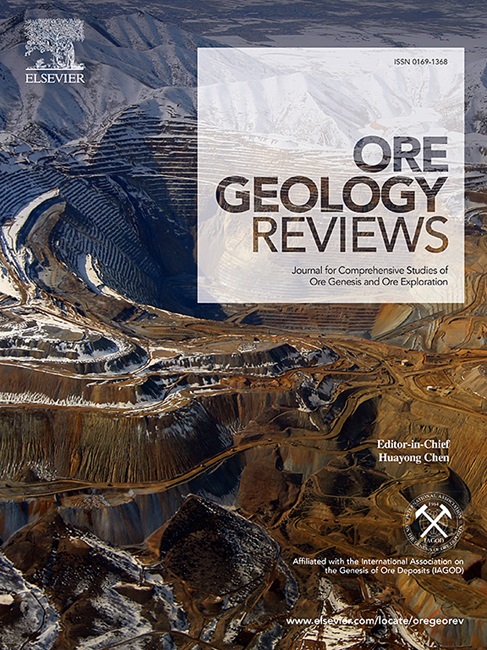A Meaningful metric to compare the value and Prospectivity of Clay-Hosted regolith rare earth element deposits
IF 3.2
2区 地球科学
Q1 GEOLOGY
引用次数: 0
Abstract
The criticality of rare earths to the global economy has resulted in a significant increase in exploration and development proposals. However, tools to evaluate the merit of competing projects have not developed at the same pace as the number of investment opportunities. Mining professionals have a duty of care to simplify exploration results that could impinge on investment decisions. This paper provides a framework for explorationists, and the investing community that is more transparent when evaluating projects and making investment decisions. The lowest capital expenditure (CapEX) surficial rare earth element (REE) deposits are leachable ionic clay hosted deposits formed by release of REEs from primary minerals during tropical and sub-tropical chemical weathering. Under these conditions mobile REEs migrate as aqueous complexes and are adsorbed onto kaolinite, halloysite and smectite group clays or are precipitated as secondary REE-bearing minerals. The chemistry of source lithologies plays a major role deposit geochemistry. Depending on source mineralogy, clay hosted systems above granites are typically enriched in light REE elements (LREE-La, Ce, Pr, Nd and Sm) or heavy REE elements (HREE-Eu, Gd, Tb, Dy, Ho, Er, Tm, Yb and Lu). However, clay hosted REE systems above mafic and ultramafic alkaline intrusions are enriched in the high value heavy REE elements and importantly the critical element scandium.
Assessing investment prospects for regolith clay-hosted REE deposits requires evaluation of factors, beyond simply considering resource tonnage and rare earth oxide (REO) concentration. To simplify valuation assessments and thus allow effective comparisons between regolith-hosted clay REE projects, we have devised a metric encompassing critical parameters influencing project value. These include total REO concentration, heavy REO to total REO ratio, proportions of all REOs, and USD/kg pricing of the REOs. Scandium’s inclusion acknowledges its common enrichment in regolith profiles derived from heavy rare earth element (HREE)-rich alkaline mafic source lithologies. We demonstrate this metric using publicly available data for ten clay-hosted regolith REE deposits. Valuations strongly depend on REE prices that are influenced by Chinese market control. The recent price drop of Dy and Tb could impact the commercial viability of projects outside China by making investors vulnerable to short term fiscal risk and potentially preventing investment in new mines. Viability of REE projects does not only depend on total REO content (grade). Given the predicted supply chain deficit for DyTb, the ratio of HREE (DyTb) to LREE (NdPr) is an additional important value factor to be considered. In addition, to ensure environmental feasibility, ores should also have low radioactivity thus mitigating against potential roadblocks common with primary REE and placer REE deposits. Other factors are the size and distribution of tenements, the geopolitical jurisdiction and the taxation and royalty regime where tenements are located.

求助全文
约1分钟内获得全文
求助全文
来源期刊

Ore Geology Reviews
地学-地质学
CiteScore
6.50
自引率
27.30%
发文量
546
审稿时长
22.9 weeks
期刊介绍:
Ore Geology Reviews aims to familiarize all earth scientists with recent advances in a number of interconnected disciplines related to the study of, and search for, ore deposits. The reviews range from brief to longer contributions, but the journal preferentially publishes manuscripts that fill the niche between the commonly shorter journal articles and the comprehensive book coverages, and thus has a special appeal to many authors and readers.
 求助内容:
求助内容: 应助结果提醒方式:
应助结果提醒方式:


